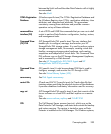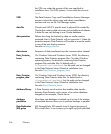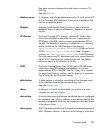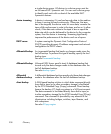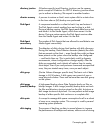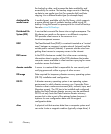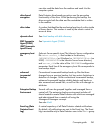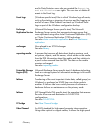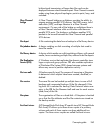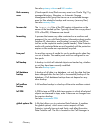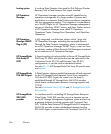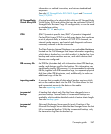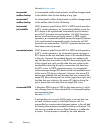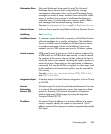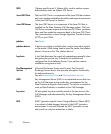bi-directional transmission of large data files and can be
deployed between sites kilometers apart. Fibre Channel connects
nodes using three physical topologies: point-to-point, loop, and
switched.
Fibre Channel
bridge
A Fibre Channel bridge or multiplexer provides the ability to
migrate existing parallel SCSI devices, like RAID arrays, solid
state disks (SSD), and tape libraries to a Fibre Channel
environment. On one side of the bridge or multiplexer there is
a Fibre Channel interface while on the other side there are
parallel SCSI ports. The bridge or multiplexer enables SCSI
packets to be moved between the Fibre Channel and parallel
SCSI devices.
file depot A file containing the data from a backup to a file library device.
file jukebox device A device residing on disk consisting of multiple slots used to
store file media.
file library device A device which resides on a disk emulating a library with several
media, hence containing multiple files, referred to as file depots.
File Replication
Service (FRS)
A Windows service that replicates the domain controller store
logon scripts and group policies. FRS also enables replication
of Distributed File System (DFS) shares between systems and
allows any server to perform replication activity.
file tree walk (Windows specific term) The process of traversing a filesystem
to determine which objects have been created, modified, or
deleted.
file version The same file can be backed up multiple times in case of full
backups and incremental backups (if the file changed). If the
log level ALL is selected for backup, Data Protector retains one
entry in the IDB for the filename itself and one for each version
(date/time) of the file.
filesystem The organization of files on a hard disk. A filesystem is backed
up so that the file attributes and the file contents are stored on
the backup media.
first-level mirror (HP StorageWorks Disk Array XP specific term) HP StorageWorks
Disk Array XP allows up to three mirror copies of a primary
volume and each of these copies can have additional two
copies. The three mirror copies are called first-level mirrors.
Concepts guide 363



